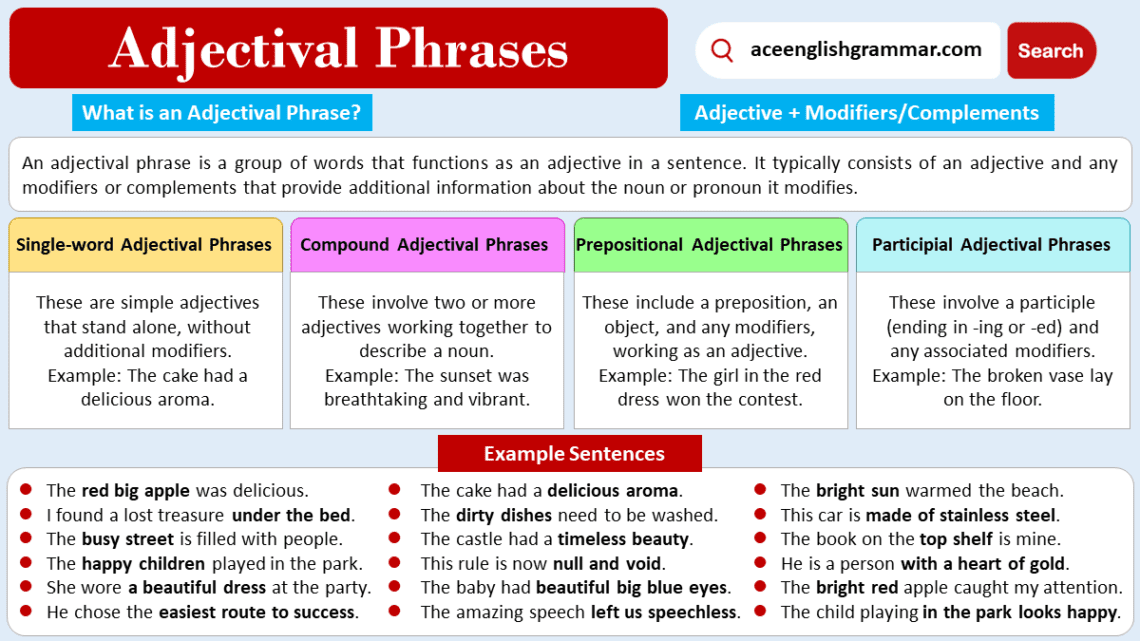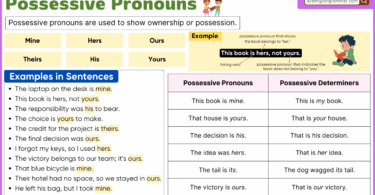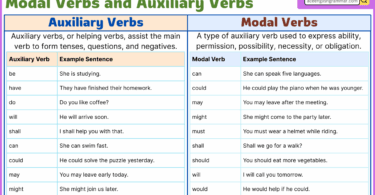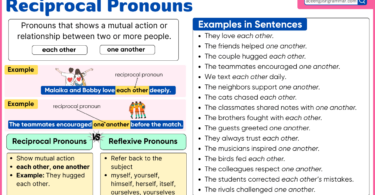Adjectives describe or modify the noun, but sometimes a single word isn’t enough to capture the complexity of what we’re trying to convey. That’s where adjectival phrases come in. An adjectival phrase is a group of words that function together to describe or modify a noun or pronoun in more detail. Understanding how to use adjectival phrases effectively is crucial for clear and concise communication. In this article, we will discuss everything you need to know about adjectival phrases like, what they are, how they function in a sentence, and examples of how to use them effectively. So let’s get started!
Table of Contents
What is an Adjectival phrase?
An adjectival phrase is a group of words that functions as an adjective to modify or describe a noun or pronoun in a sentence. It typically includes an adjective along with any modifiers or complements that provide additional information about the noun or pronoun. The purpose of an adjectival phrase is to give more details, add description, or convey specific qualities about the noun it is modifying.
- Adjective + Modifiers/Complements
For example:
- The red car is parked in the driveway.
- She wore a necklace made of silver.
- A girl with curly hair sat in the corner.
In these examples, “red,” “made of silver,” and “curly hair” are adjectival phrases providing more information about the nouns “car,” “necklace,” and “girl” respectively.
Types of Adjectival Phrases
Adjectival phrases come in various forms, each serving a specific purpose in adding detail to our language. Let’s explore some common types:
- Single-word Adjectival Phrases:
- These are simple adjectives that stand alone, without additional modifiers.
- Example: The cake was delicious.
- Compound Adjectival Phrases:
- These involve two or more adjectives working together to describe a noun.
- Example: He wore a shirt with a loud and colorful pattern.
- Prepositional Adjectival Phrases:
- These include a preposition, an object, and any modifiers, working as an adjective.
- Example: The girl in the red dress won the contest.
- Participial Adjectival Phrases:
- These involve a participle (usually ending in -ing or -ed) and any associated modifiers.
- Example: The falling leaves covered the sidewalk.
How to Use and Identify Adjectival Phrases?
Here are some basic rules for using and identifying adjectival phrases appropriately, along with example sentences:
Identifying Adjectival Phrases:
- Adjectival phrases usually consist of an adjective and any modifiers that come before or after it.
- They directly modify a noun or pronoun in the sentence.
- Adjectival phrases are often placed right before or after the noun they modify
- They do not contain a subject and a verb.
- They provide more details about the noun, such as its size, color, origin, material, etc.
- They answer questions like “What kind?” or “Which one?” about the noun.
Structure of an Adjectival Phrase:
-
Adjective + Adverb
Example: A highly skilled musician
-
Adjective + Prepositional Phrase
Example: The book on the top shelf is my favorite.
-
Adjective + Relative Clause
For example: The car that is parked in front of the house is red.
-
Adjective + Participle Phrase
Example: The child playing in the park looks happy.
-
Adjective + Prepositional Phrase + Participial Phrase
Example: The house with the white picket fence, shining in the sun.
Rules for Using Adjectival Phrases
Here are some basic rules for using adjectival phrases with example sentences:
- Place the adjectival phrase close to the noun it modifies for clarity and to avoid confusion.
- The adjectival phrase should agree in terms of number and gender with the noun it modifies.
- Example: “the beautiful flowers” or “the handsome men.”
- When an adjectival phrase comes before the noun, it’s usually not separated by commas.
- Example: The car parked in front of the house is mine.
- Use commas to separate nonessential adjectival phrases.
- Example: The book, which is on the shelf, is interesting.
- Arrange multiple adjectival phrases in a logical order. The order is generally: opinion, size, age, shape, color, origin, material, and purpose.
- Example: He bought a small, round, red balloon.
- They can be used to make comparisons. For example,
- Example: This book is more interesting than the previous one.
- If it appears before the noun, use a comma to separate it from the rest of the sentence.
- If the adjectival phrase consists of multiple words that together modify a noun, use hyphens to connect them.
- Example: He bought a well-known painting.
- Avoid Repetition, choose the most relevant ones.
- If using multiple adjectival phrases, maintain parallel structure in terms of form and placement.
- Example: She is intelligent, hardworking, and dedicated.
Adjectival phrases vs Adjectival clauses
An adjectival phrase is a group of words that functions as an adjective to modify a noun, providing additional information about it. It lacks a subject and a verb, and it cannot stand alone as a complete sentence. For example: “The book with the red cover is mine.” In contrast, an adjectival clause is a group of words that also functions as an adjective to modify a noun, but it includes a subject and a verb and can stand alone as a complete sentence. Adjectival phrases modify nouns without containing a subject-verb relationship, while adjectival clauses do contain a subject-verb relationship and can function independently as sentences. For example: “The book that I read yesterday was captivating.”
List of Common Adjectival Phrases
- in a hurry
- on time
- with a smile
- in the morning
- under the sun
- at night
- with joy
- on a rainy day
- in a loud voice
- at the top
- in the middle
- with excitement
- with confidence
- on the beach
- in the city
- with passion
- at the bottom
- on a cold day
- in the corner
- with caution
- on the edge
- in the distance
- at the beginning
- with kindness
- on a hot summer day
- in the dark
- with ease
- at the end
- in the afternoon
- with determination
- on the mountain
- in the sky
- with care
- at the office
- in the garden
- on the road
- with enthusiasm
- in the water
- with grace
- at the party
- in the shade
- on the surface
- with style
- in the sunlight
- on the stage
- with humor
- at the store
- in the wind
- with surprise
- on the field
- with effort
- in the rain
- on the way
- with a frown
- in the snow
- at the store
- on the river
- with a sigh
- in the evening
- at the park
Adjectival Phrases Examples
- The red apple fell from the tree.
- She wore a dress made of silk.
- He is a person with a heart of gold.
- The old and dusty book sat on the shelf.
- The running child giggled with joy.
- The bright sun warmed the beach.
- The cake had a delicious aroma.
- The dirty dishes need to be washed.
- The falling leaves covered the sidewalk.
- The flying bird soared through the sky.
- The written note explained everything.
- The beautiful flowers bloom in the garden.
- The busy street is filled with people and cars.
- The forest was filled with mysterious sounds.
- The amazing performance left us speechless.
- We found a treasure hidden under the sand.
- The movie’s ending was unexpectedly boring.
- The cold ice cream melted quickly in the hot sun.
- His performance was energetic and dynamic.
- The beautiful red roses in the garden are blooming
- The tasty sandwich was made with fresh ingredients.
- She received an award for her outstanding performance.
Adjectival Phrases Exercises
Q1. Which of the following is not an adjectival phrase?
- “In the dark”
- “With a smile”
- “Running quickly”
Q2. Choose the sentence with the correct adjectival phrase.
- The cat with a long tail.
- The cat was chasing.
- The cat and the dog played.
Q3. Identify the adjectival phrase in the sentence: “She lives in a house with a red door.”
- Lives in a house
- With a red door
- She lives
Q4. Which sentence contains an essential adjectival phrase?
- The book, which had an intriguing cover, caught my attention.
- The book that was on the shelf was dusty.
- The book with many illustrations was popular.
Q5. Choose the option with the adjectival phrase:
- Ran quickly
- Bright blue sky
- Sat quietly
Q6. Which sentence includes a non-essential adjectival phrase?
- The car that was parked outside belongs to John.
- The car with the leather seats is mine.
- The car drives smoothly.
Q7. Choose the sentence with the correct adjectival phrase.
- The mountain reached the clouds.
- The mountain is covered in snow.
- The mountain and the valley.
Q8. Which sentence contains an adjectival clause?
- The tree with the colorful leaves is a maple.
- The tree stood tall and proud.
- The tree under the window is an oak.
Q9. Identify the adjectival phrase in the sentence: “He bought a car with a powerful engine.”
- He bought a car
- With a powerful engine
- Powerful engine
Q10. Which sentence includes an adjectival phrase at the beginning?
- The movie I watched last night was great.
- I watched a movie about superheroes.
- I watched a movie and ate popcorn.
Answers:
- c) Running quickly
- c) the cat with a long tail.
- b) with a red door
- b) The book that was on the shelf was dusty.
- b) Bright blue sky
- b) The car with the leather seats is mine.
- b) The Mountain is covered in snow.
- a) the tree with the colorful leaves is a maple.
- b) With a powerful engine
- a) the movie I watched last night was great.
FAQs
Q1: What is an adjectival phrase?
An adjectival phrase is a group of words that functions as an adjective to describe or modify a noun or pronoun in a sentence. It provides additional information about the noun or pronoun.
Q2: What is the purpose of using adjectival phrases?
Adjectival phrases provide more details and vivid descriptions of nouns, helping to paint a clearer picture in the reader’s mind. They make sentences more interesting and engaging by adding depth to the noun being modified.
Q3: Can adjectival phrases contain multiple words?
Yes, They can range from just an adjective to a group of words that provide a more detailed description of the noun. These words can include adverbs, prepositional phrases, and even multiple adjectives.
Q4: What’s the main difference between an adjectival phrase and an adjectival clause?
An adjectival phrase is a group of words acting as an adjective, modifying a noun; it doesn’t contain a subject and verb. An adjectival clause is a group of words also acting as an adjective, containing a subject and verb; it functions as a complete sentence within a sentence.
Q5: Give example sentences of adjectival phrases.
Here are some example sentences of adjectival phrases:
- I bought a car in bright red.
- The house on the hill is charming.
- The boy with blue eyes smiled.
- The red apple fell from the tree.
- The bright sun warmed the beach.
You May Also Like





Leave a Comment